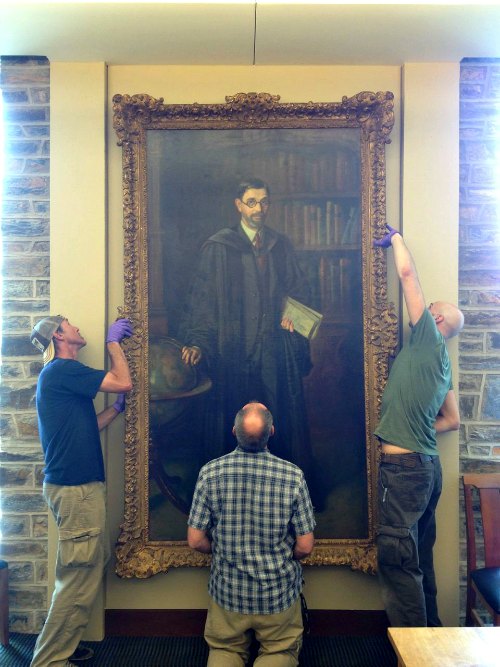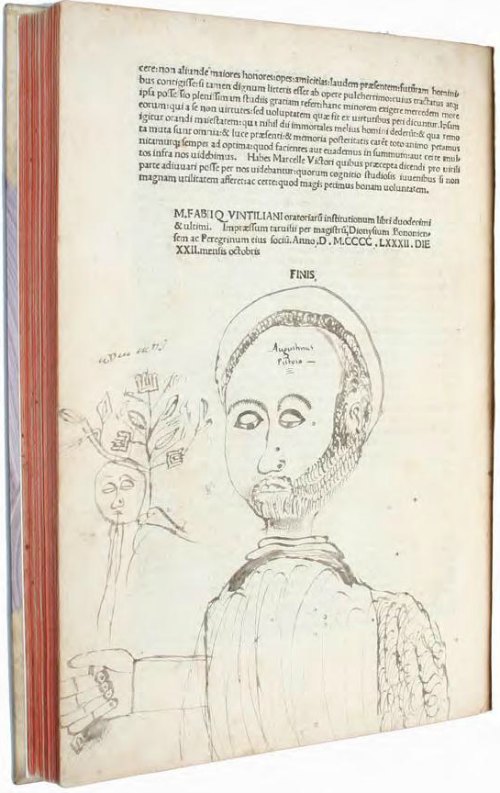This week marked the final chapter of the Rubenstein Library relocation project of 2013, when the Library’s portrait collection was relocated from the Gothic Reading Room to the Rubenstein Library’s temporary space on the third floor of Perkins. It was a poignant and, at moments, spirited end to a process that began many months ago.

The portrait collection has been with the Gothic since the very beginning. Upon the library’s opening in 1930, the well-known artist Douglas Chandor was commissioned to paint portraits of The Duke Endowment trustees, Mary Duke Biddle and Nanaline Duke, and the architect and builder of the campus, Horace Trumbauer. These portraits were completed between 1930 and 1932 and hung in the Gothic, then functioning as the library’s general reference room. Over the years, portraits of the University’s founders and presidents were added, along with those of other notable figures in the University’s history. By the time of our move, 32 auspicious figures awaited the careful attention of the professional art handlers we brought in for this assignment.
Because of the scale of the room, scaffolding was needed to even reach the pictures. After that came rebacking the canvases, vacuuming the gilded frames, and replacing the hanging hardware. Finally, the portraits were ready for their voyage across the library and to their new spots, all purposefully selected to allow for their safe storage during the time of the Gothic’s renovation.
While most of them are now in staff-only spaces, visitors who wish to see a particular portrait can do so by contacting the Rubenstein Library to make an appointment. Portraits of Washington, James B., and Benjamin N. Duke are hanging outside the Rubenstein classroom, and are viewable during regular Rubenstein hours without an appointment.

One painting, however, did not go so quietly to storage—a life-size, full-body portrait of President Few. It took scaffolding, ladders, and five people to remove him from his long-time rest, and once on the ground it became immediately clear that the portrait is nearly a half foot taller than the ceilings on the third floor of Perkins, where he was headed. An alternative spot was needed and quick! Thanks to the University Librarian, a suitable location was soon found. President Few now greets guests on the main floor of the Library, immediately behind the Perkins reference desk. It is perhaps fitting that the visage of the man who presided over the Gothic Room’s opening in 1930 was the last and most dramatic to take his leave from this room.
Post contributed by Kat Stefko, Head of Technical Services, Rubenstein Library.








